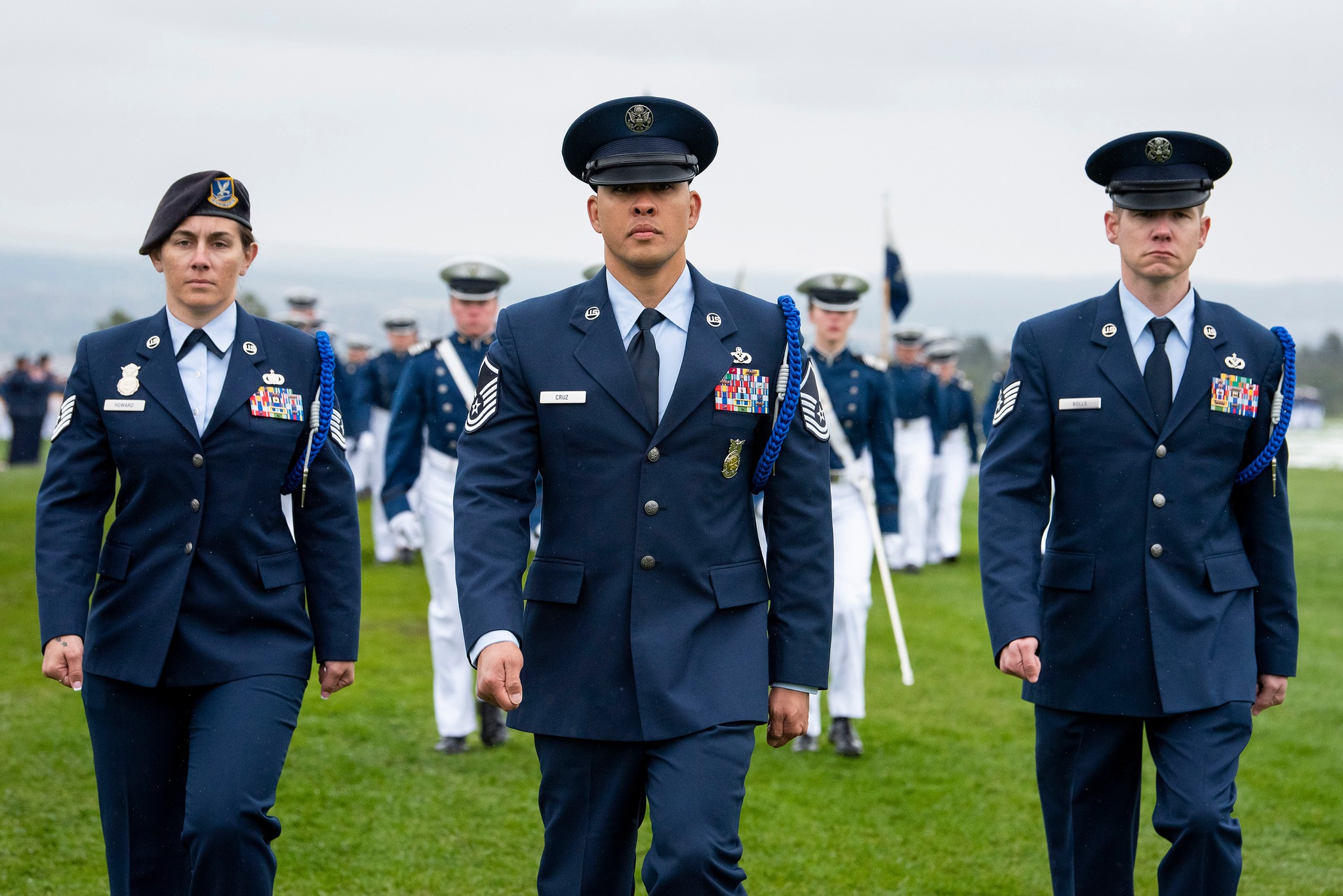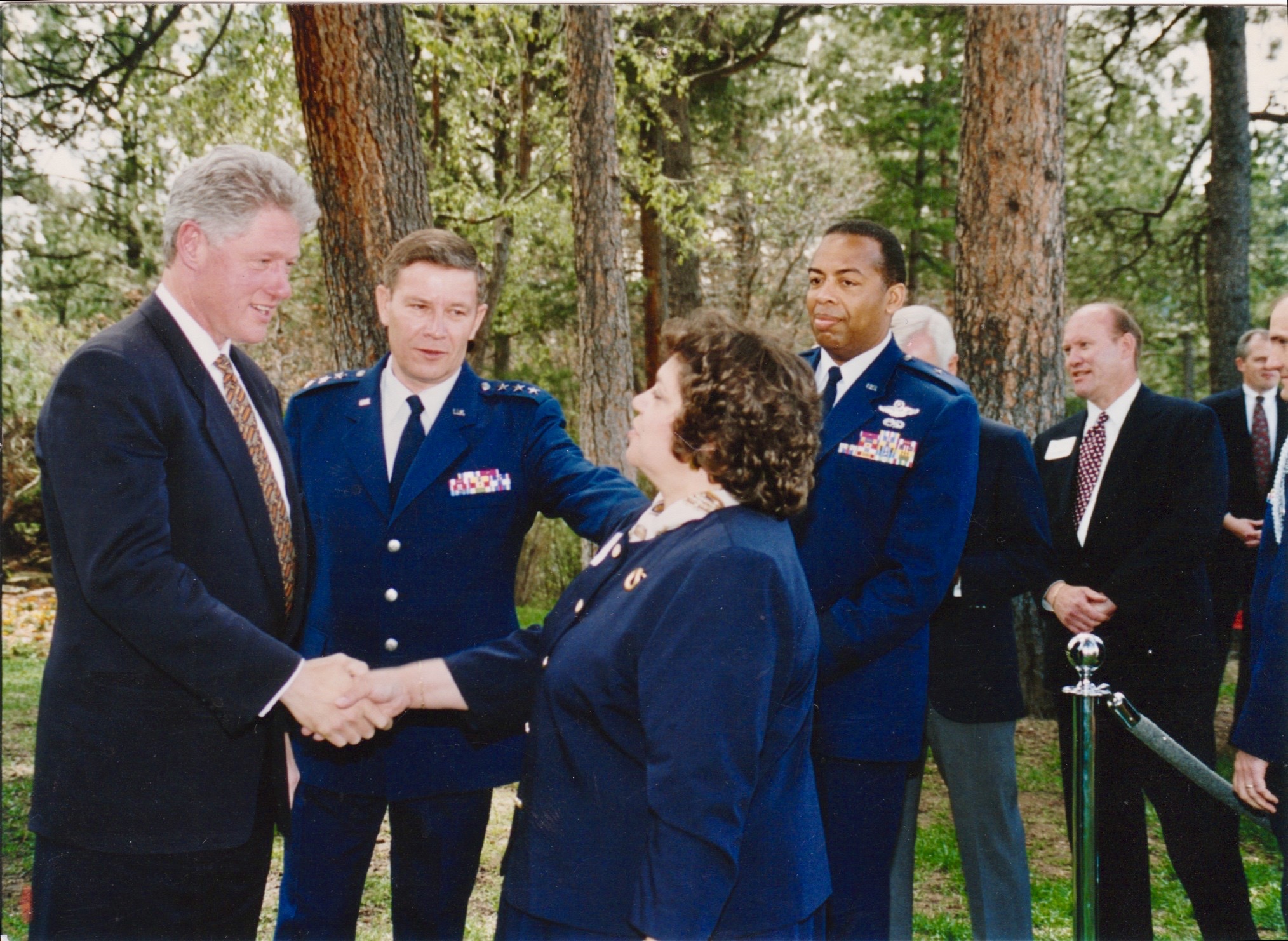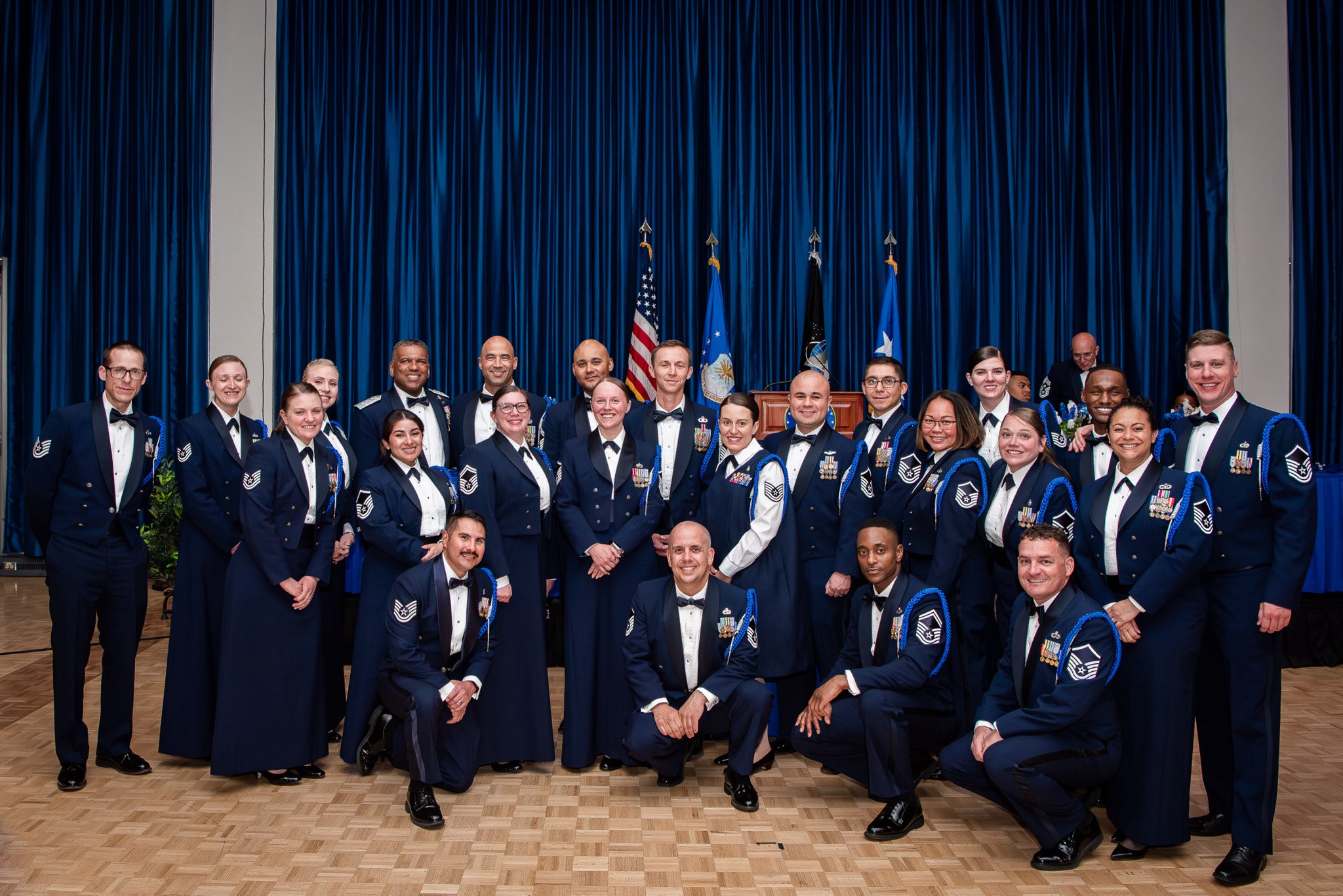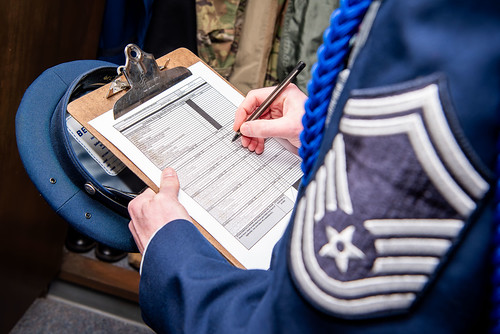Embedded
The inception of enlisted leaders in cadet squadrons

The situation seemed almost to be a setup for unsuspecting cadets about to graduate: From the beginning of our time at the U.S. Air Force Academy, we are told we are the “cream of the crop” and “America’s best and brightest,” among other accolades. At graduation, we are made aware that, as soon as we toss our white parade hats into the Falcon Stadium sky, we, as newly commissioned officers, will outrank the vast majority of the individuals in the Air Force and Space Force.
While it may be apocryphal, in my cadet days we would often hear rumors of a newly commissioned Academy graduate making the mistake of chewing out a chief or senior master sergeant. In one tale, a hapless lieutenant subsequently spent his entire first assignment trying to correct mysterious and persistent problems with his pay.
It could be argued that the miscalculation was understandable. In addition to the puffery described above, for many years at the Academy the only interactions cadets had with enlisted personnel were for the most part brief encounters with clerks, bus drivers and the like. We rarely had the opportunity to learn about enlisted airmen’s careers and accomplishments.
As the son of an Air Force master sergeant, I had great respect for the enlisted ranks and knew of their value to the force. Many other new graduates did not have the benefit of that knowledge.
Fortunately, that perilous situation has changed. Thirty years ago this summer, enlisted leaders were first assigned to the cadet squadrons.
'DO SOMETHING ABOUT IT!'
The commandant of cadets at the time, Lt. Gen. (Ret.) John Hopper Jr. ’69, oversaw implementation of the program. While he had, of course, gained an appreciation of the enlisted force before assuming the commandant position, he also initially benefited from his family situation as a graduate.
“My dad was a career Army NCO,” he is proud to state.
Gen. Hopper recalls that the idea of adding enlisted representation had been around a long time.
“I would love to take credit for the idea, but there had been discussions well before I became commandant,” he says. “In fact, I can remember discussing with my fellow AOCs in the early ’80s about how nice it would be to have an NCO assigned to every cadet squadron.”
Then-Cadet Kenneth Stoltman ’94 is another individual instrumental in getting enlisted troops more directly involved in cadet life. On Nov. 13, 1992, he sent a letter to the Cadet Wing sergeant major, Chief Master Sgt. Donald Meadows, requesting that NCOs be permanently assigned in each cadet squadron.
Lt. Col. Stoltman, who currently serves in the Reserve in Minneapolis, Minnesota, says his interest in the concept began as an ROTC student at the University of North Dakota, where he spent two years before gaining admission to the Academy.
“NCOs were all over the place… They were crawling all over our formations and around during various field training exercises,” he says. “I remember what it felt like when they were around. I wanted to impress them. They were tough. I was intimidated, but I knew they were there to help me. I naturally assumed that would be the case when attending USAFA, but it wasn’t.”
“It bothered me from the start,” he admits.
As a two-degree, he served as the Cadet Wing sergeant major. In that position, he worked with and received mentorship from Chief Master Sgt. Meadows and Senior Master Sgt. Mike Byrd. He fondly recalls when Meadows gave him the nickname “Maddog.”
Regular discussions of standards at the Academy brought back to mind Col. Stoltman’s ROTC experiences, and he remembers repeatedly asking the two NCOs, “Why don’t we have more NCOs around here?”
The response: “I don’t know, but why don’t you do something about it?!”
“And that was the start,” he says. “We started discussing what it was going to take to change the institution.”

ROLE MODELS
The lengthy ordeal taught him a lot about the staffing process.
“I had to build and staff a package with a bullet background paper through the chain of command. Chief Meadows, Senior Byrd and my AOC coached me on how to draft my Air Force career’s first staff summary sheet with a bullet backgrounder on my proposal, concerns, reasons, recommendations and value to the institution — and after 100 reviews,” he quips, “we staffed it to the commandant as per the chain. I also recall accompanying the chief to discuss it with senior leaders.”
On Dec. 7, 1992, then-Commandant of Cadets Brig. Gen. Richard Bethurem ’66 approved the well-received plan, under which NCOs would be tasked to “assist the AOC in all of his/her duties plus provide an NCO role model.”
Coincidentally, while the genesis of this transformation was taking place, the Academy’s most noted enlisted person, Chief Master Sgt. (Ret.) William Coltrin, passed away in Santa Maria, California, on Nov. 26, 1992. (See the sidebar for additional information on this inspirational leader and the important award named in his honor.)
The Academy base newspaper covered the enlisted representation topic on the front page of its July 20, 1995, edition. The Falcon Flyer’s Senior Airman Steve Horton wrote the article headlined “NCOs join ranks with cadet squadrons.”
The article opens, “A program placing noncommissioned officers in a day-to-day working relationship with cadets kicks off during the fall semester. One NCO military training advisor will be assigned to each cadet squadron to assist the air officer commanding and help cadets learn about the enlisted force and how officers and NCOs interact on a daily basis.”
Senior Master Sgt. Lisa Robinson, 34th Training Group superintendent, said in the article that the MTAs would, in addition to functioning as advisers and role models, develop and conduct training in leadership, management, human relations and other military-related issues. They would also monitor and advise on drill and ceremonies while assisting in counseling cadets on personal and professional matters.
According to the article, West Point and Annapolis had recently implemented similar programs, and “[t]he other service academies gave the program rave reviews.”
Upon receiving approval to institute the program from then-Chief of Staff of the Air Force Gen. Ronald Fogleman ’63, Academy officials visited West Point to learn about the Military Academy’s program, to include how they “started it and what problems they encountered along the way.”
The Falcon Flyer described the extensive training program that USAFA officials developed to prepare the NCOs for the important new assignment. The preparation began with attendance at the AOC school and briefings from the commandant, dean, athletic director and other senior leaders.
“Each MTA’s training also consists of computer training, the cadet disciplinary system, cadet counseling center programs and referral procedures, the honor system, and cadet financial services,” it says. “And, because the training advisors are required to teach, they are required to attend a [seven- to 10-day] short course at Academic Instructor School for platform instruction training, classroom instructor training and briefing techniques.”
At its inception, the special-duty-assignment positions required “10 years of service and a strong military record.”
‘JUST RIGHT’
While the program was initiated in 1995, it took another year to fully staff the positions. Then-Brig. Gen. Hopper was the commandant of cadets during the transition period.
He opened by giving his credit to his leaders, saying, “This whole thing would not have happened without the support of [Lt. Gen. Paul Stein ’66] and Chief Fogleman.” Gen. Stein served as the superintendent at the time.
He also recognized Robinson as “a key player.”
“Once we got the go-ahead,” he continued, “the really hard work began, and it ran along two tracks — get the people and train them for the mission. Getting the right people is always tough. We were asking the AF to invest even more in USAFA by assigning our highest performers, completely outside their career fields, to grow the next cadre of leaders. It wasn’t easy and it took some time, but we got it done.”
As to how they determined the proper rank for these NCO positions, he recalls, “It sounds a bit like Goldilocks, but a fast-moving young, enlisted airman could get to staff sergeant and be younger than some of our older cadets. On the other hand, a master sergeant would certainly be older but was also likely to be a key supervisor whose loss could trigger serious mission impacts. That rigorous analysis made tech sergeant ‘juuuust right!’ The reality was we were prepared to take a senior staff sergeant (particularly those that already had a line number to tech) or a brand-new master sergeant while our preference remained tech sergeants.”
The source of these top enlisted leaders was also carefully considered.
“We wanted to pull from across the force. Some may have thought the right answer was to draw exclusively from our existing force of Lackland TIs [training instructors, who conduct Basic Military Training for the enlisted force], but that was not the case. TI experience/representation was welcome, but our mission was broader,” he says.
In describing the importance of the program, he relates the story of a cadet who had been a Marine Corps lance corporal. After BCT, the cadet had announced that he would be leaving USAFA at Christmas of his first year.
“I wanted to talk to him before he left,” Gen. Hopper says, “and it was well worth it. This young man could not help but compare USAFA BCT to Marine Corps boot camp, and his reception at his first Marine Corps assignment. He never felt a part of the Cadet Wing. His expectation was that the end of BCT would be akin to the end of Marine Corps boot camp where he received his globe and anchor and was welcomed as a Marine. For him, graduation from BCT only meant thousands of cadets there to yell at him. He was unsettled by the additional attention and put off by the personal appearance of those administering discipline (he stated our cadets treat their uniforms like ‘T-shirts and flip-flops’). All things not good for the commandant to hear.
“I thought with the introduction of an experienced NCO in each squadron,” Gen. Hopper continues, “we had a real chance to refocus on this idea of a ‘four-class system’ (remember, three of the four classes identify/wear the rank of enlisted airmen). The key component was having one of our outstanding AF NCOs assigned to each squadron.”
He concludes by returning to the evolution of the program and its role in accomplishing the Academy’s training mission, saying, “It was not simple, but we had Sgt. Robinson and her team of NCOs and officers to sift through every detail. I believe they did a great job. Like me, I’m sure you’ve heard many times over: The strength of the American military is the quality and professionalism of our NCO corps.
“I’m glad we finally took advantage of that quality and professionalism!”

‘BREAKING DOWN BARRIERS’
Gen. (Ret.) Steve Lorenz ’73, who succeeded Gen. Hopper as commandant, agrees.
“I arrived here in August 1996,” Gen. Lorenz says. “We were allowed one enlisted MTA in each cadet squadron. The program made such a positive difference in the morale of the squadrons and the MTAs were such great role models for all the cadets. It was and is now a great program.”
The Academy base paper revisited the topic in its Sept. 1, 2000, Parents’ Weekend issue. The article, “Cadets catch a glimpse of the enlisted corp” [sic], by Senior Airman Marijon Clarke, confirmed that “[t]he inclusion of military training leaders, enlisted people from a variety of career fields, into the Cadet Wing opened many doors in breaking the barriers between cadets, future second lieutenants and the Air Force’s enlisted force.”
The article related that the enlisted positions had undergone a name change, from military training adviser to military training leader.
“I think the biggest impact the MTLs have had on cadets is breaking down barriers and stereotypes,” then-cadet Jason Willey ’01 was quoted as saying. “MTLs have shown me how qualified people in the enlisted core [sic] are. These are the people I am going to look up to as an officer, especially as a young second lieutenant, for all my help and assistance.”
Five years on, the Hopper-Robinson concept of varied backgrounds was still in effect.
“MTLs come here from around the Air Force, people such as communications specialists, crew chiefs and personnel specialists,” the article stated.
The article quotes Master Sgt. Mike Jewel, saying the MTL-cadet relationship goes both ways.
“I’ve learned from them as much as they’ve learned from me,” Jewel said.
“We teach them what to look for in a good officer and NCO,” said Master Sgt. James Garrett, an original MTA from 1996. “A lot of times the perspectives are different, and that’s not good or bad. This just gives them all the parts of the puzzle, as opposed to one or two views. Before the MTLs were here, I don’t think they had all the pieces they needed to become a good, effective officer.”
A FRONT ROW SEAT
The next major step in the evolution of the program took place with the Agenda for Change, the Air Force-level response to a sexual assault scandal at the Academy in the early 2000s. On Dec. 20, 2004, the Air Force officially created the Academy Military Training NCO career field, along with implementing another name change. That designation strengthened the selection process, ensuring that top individuals filled the positions and confirming that the job would be a valuable step in an NCO’s career progression.
Senior Master Sgt. Mary Martin is the Academy’s special duty manager, Academy military trainer.
“The Agenda for Change did more than rename the program,” she says. “It formalized the role of Academy military trainers, shifting the focus toward character development, leadership and mentorship, and realigned their integration into the cadet chain of command.”
She goes on to say, “Over the years, we’ve also seen more deliberate emphasis on performance standards, initial skills training and talent management processes for incoming AMTs. So, while the foundation existed before, the Agenda for Change marked a pivotal turning point in how we developed and empowered enlisted leaders within the cadet squadrons.”
Another change that has occurred over the three decades is the number of NCOs assigned to each squadron. Initially, there was one enlisted leader assigned per squadron. It expanded to two, and then budget cuts reduced the number to one NCO per squadron. Martin reports that each squadron again has two AMTs.
Tech Sgt. Chasity Golden, CS-02 AMT, recently gave her impressions of the position.
“Being an AMT is more than a job — it’s a front-row seat to transformation,” she says. “We get to guide cadets through failure, growth and leadership under pressure. Watching them evolve into officers with character and grit reminds me why this role exists and why it still matters decades later.”
Maj. Kristin Montville, CS-09 commander, echoes that sentiment, saying, “The AMTs provide our cadets with a crucial perspective and are the first representatives of our professional enlisted corps to the young Air Force and Space Force officers. My AMTs form the foundation of our squadron and mentor not only our cadets but also me as a first-time commander. They set the example for standards and professionalism and teach our cadets how to be frontline supervisors and followers as well as share their experiences — good and bad — with young officers so our cadets can learn from operational Air Force examples. Since many of our cadets will become pilots, the AMTs also provide a glimpse into the supporting AFSCs that enable our flyers to perform their missions.”
A BENEFIT TO ALL
Chief Master Sgt. Bob Vásquez served in the Air Force for more than three decades and on the Academy’s Center for Character and Leadership Development staff for nearly 20 years. His stature among the cadets he taught ranks right up there with Bill Coltrin’s. He is the only career enlisted person ever recognized as an Honorary AOG Member.
“Every AMT on USAFA has exponentially more warrior experience than the cadets,” he says. “Done correctly, a graduate of the Academy will have the knowledge and wisdom to understand and value the enlisted experience to some degree, based on the exposure to it. We’re all united by our purpose as warriors, and together, we’re all better.
“The presence of AMTs and other enlisted warriors at USAFA is invaluable,” he continues. “The ultimate purpose of the institution is to develop leaders of character who lead enlisted warriors. Having served on active duty for almost 31 years, I know that the enlisted culture is different than the officer culture. Neither is better than the other. Enlisted folks will say, almost in jest, that they work for a living while the officers take the credit for success. Be that as it may, how enlisted folks, including their families, live and work differs from how commissioned folks do. It just does.
“Shouldn’t leaders know about their followers’ culture, how they do what they do, their vernacular, their professional values, their purpose?” Vásquez asks.
His answer, of course, is an enthusiastic yes, no doubt followed by his catchword, “Heirpower!”
Looking back at the program 30 years on, Col. Stoltman recently shared, “I stayed in touch with Chief Meadows a few years after graduation, and I recall that in one phone call he told me, ‘Maddog, we got some of those NCOs showing up here now because of you.’ At the time, the size of the impact of our work didn’t register. ... At the time, I recall being consumed with being a line pilot, surviving the tempo of the Air Force, and I thought, ‘Yeah, we needed NCOs there, we got ’em there, and that’s how it’s supposed to be.’ But yes, now knowing that the USAFA was changed forever from my small part ... I have never been more humble but proud of being a graduate than now, and I have NCOs to thank for it!”
The Academy’s initiative 30 years ago to add enlisted leadership to cadet squadrons has paid great dividends. Today’s graduates have a more accurate and more complete perspective on the abilities and the importance of the enlisted force in the United States military than those who graduated before the establishment of this monumentally significant program — a shift that has benefited everyone involved.

